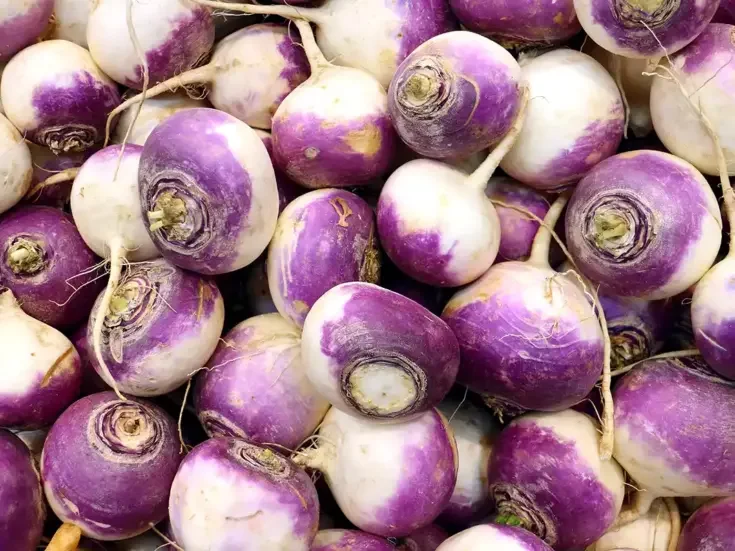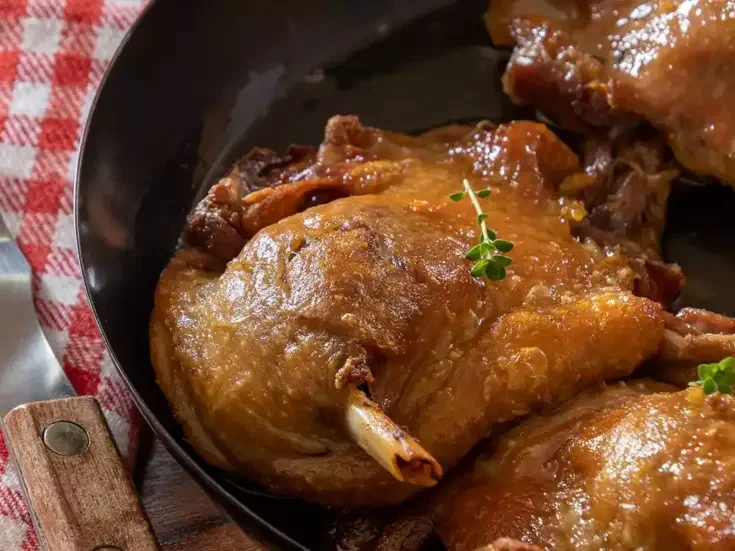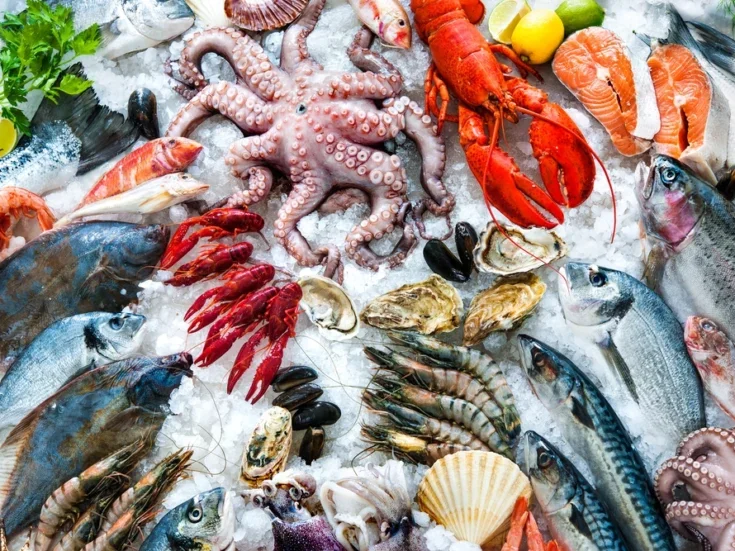
Joanna Simon’s tour of wine country cuisine reaches Germany in time for the nationwide festive tradition of Christmas roast goose or Weihnachtsgan.
I have stretched the interpretation of classic wine country cuisine this month to choose a seasonal dish that is not a classic of a single or even of several wine regions, but is eaten throughout Germany. Christmas roast goose—Weihnachtsgan—is eaten with the same dedication as turkey on Thanksgiving Day in America and on 25th December in Britain. But Christmas is not the only feast day marked by a roast goose in Germany. It’s preceded both in the calendar and in history by Martinsgans—St Martin’s Goose—on St Martin’s Day, November 11. Although not a public holiday, it’s a big day in Germany. Lantern-carrying children process through the streets and people gather around large bonfires in town squares before returning home (or going to a restaurant) for a celebratory dinner of, traditionally, roast, stuffed goose, dumplings (either made from bread, Semmelknödel, or potato, Kartoffelklösse), and braised red cabbage (Rotkohl). Spätzle (noodles) often put in appearance, too, and sometimes sauerkraut.
Christmas roast goose: In the book of good food
The St Martin’s Goose tradition dates back to the Middle Ages, when November 11 marked the end of the agricultural year—the end of the harvest. It was a feast-day that also signaled the start of the fasting period of Advent (Advent beginning earlier than it does today). The oldest known recipe for Martinsgans is in the first cook book written in German, Das Buch von guter Speise (the book of good food), also known as the Würzburger Kochbuch (the Würzburg cookbook). It dates from around 1350. In time, Christmas also came to be celebrated with roast goose and the same accompaniments.
It might be expected that a dish that has been eaten for so long and in so large a country would have evolved with regional differences in the stuffings and accompaniments, but, rather like Britain’s Christmas turkey or Thanksgiving turkey, variations are not great and they’re more familial than regional. The nearest to a regional stuffing is Kölner Martinsgans, Cologne’s chestnut stuffing for Martinsgans, but in reality a great many stuffing recipes, for both St Martin’s and Christmas goose, include chestnuts. The same applies to apples, a key component of the Cologne recipe and most others. Regional differences to the accompaniments generally extend no further than Spätzle being particularly popular in Swabia.
Whatever the minor variations to the traditional stuffing, its essential character is to provide an aromatic, fruity counterpoint to the rich, dense, savoury goose meat. In addition to apple, onions and prunes are very common ingredients, as are herbs. Mugwort is the traditional herb, but marjoram is also often used, as is thyme. Some stuffings also include sausages or the goose liver and some feature spices, although spices are more prominent in the braised cabbage.
The main alternative to fruit-rich stuffings are stuffings based on liver paté (usually with rye breadcrumbs), in which case fruit comes in the form of an accompaniment such as redcurrant-glazed peaches or spiced pears, as well as in the Rotkohl, which is cooked with apples, spices, brown sugar and vinegar, thereby providing an additional sweet-sharp contrast to the goose meat.
What to drink with roast goose
When, in the late 1980s, I started serving roast goose at Christmas, people almost invariably said: “Oh, but goose is so fatty and so difficult with wine.” There’s no question that a lot of fat is rendered in roasting a goose, but that’s just an aspect of cooking. As for the meat being tricky to match to wine, I don’t find it is. It’s more assertive than turkey, but so are game and most other meats. As so often, it’s the accompany dishes and sauces that require the attention at least as much as the main protein. That’s certainly the case with Weihnachtsgan (and the prune, chestnut, sausage, herb, and spice stuffing that I often make and which is on my website).
With the fruity stuffing or side dishes and the sweet-sharp cabbage, there’s a case to be made for a white wine, such as a Pfalz Riesling Spätlese or an Alsace Pinot Gris, but I’m not the person to make the case. I prefer red wine with goose. Thinking of the fruit component again, Pinot Noir/Spätburgunder might seem the way to go and I have had some successes with Pinot Noir, most notably with Felton Road Calvert, but the satisfying savory complexity of Burgundy and Germany’s top Spätburgunders can be subsumed. To me, what works is not so much particular grape varieties or regions but fullness and expansiveness, depth and maturity and an absence of obtrusive young tannins. Wines that have been successful more than once (mature vintages in all cases) include Grange, Mas de Daumas Gassac, Château de Beaucastel, Masi and Allegrini Amarones, Torres Mas La Plana, Villa Cafaggio Cortaccio, Château Musar, Château Tertre-Rôteboeuf (1989 and 1990), and, several times, Vieux Télégraphe 1998. And this year? I like to keep my options open until the 11th hour, but I have bottles of the last three at the ready (so far).






